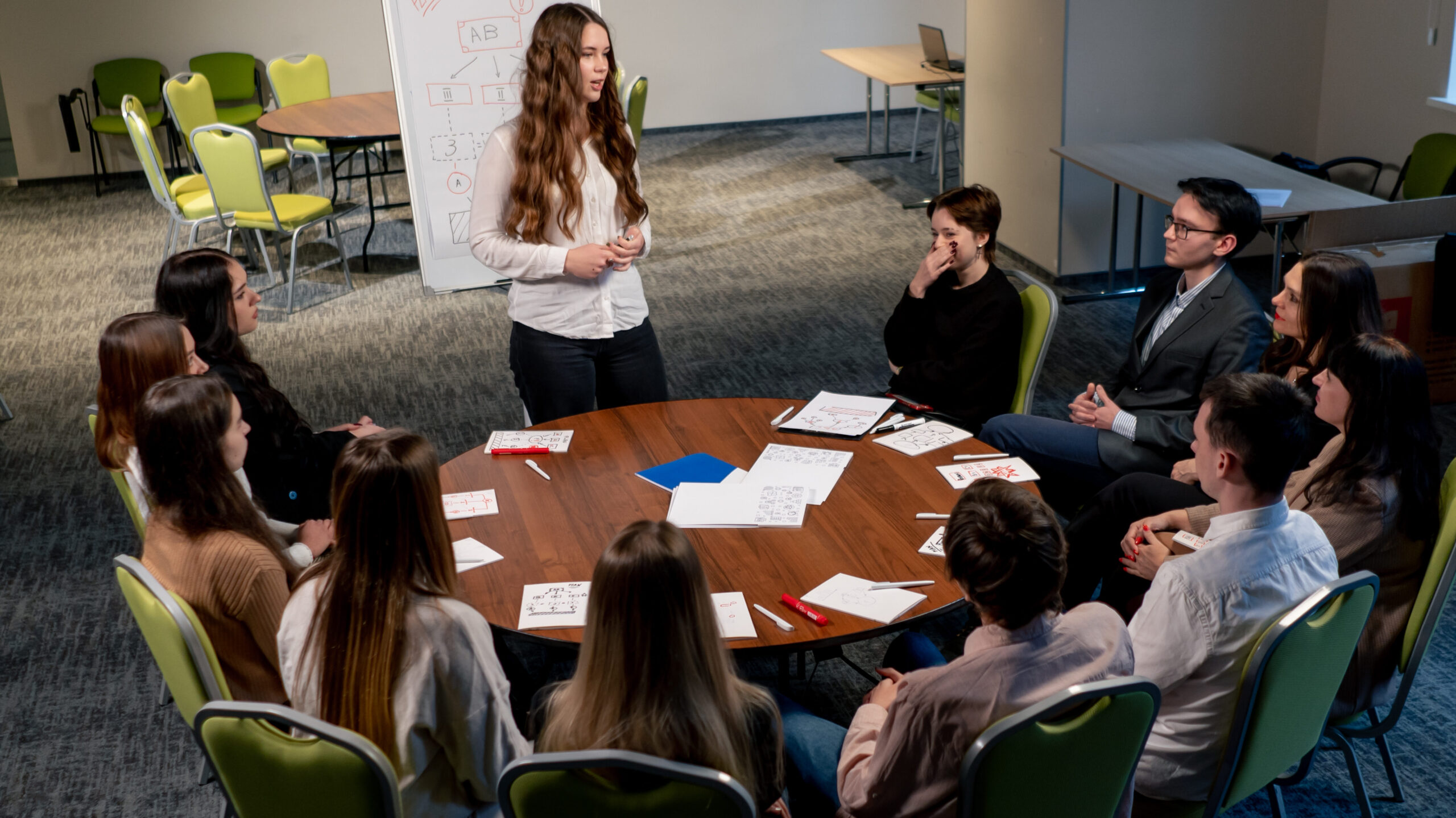Your marketing team collaborates on an AI-powered campaign development project. Sarah overwrites David’s carefully crafted prompts without notice. Michael clutters the shared workspace with experimental iterations. Jennifer accidentally deletes three hours of collaborative AI work.
By day’s end, productivity has plummeted, tensions are high, and the team questions whether collaborative AI is worth the coordination headaches.
This scenario illustrates why AI collaboration requires explicit etiquette guidelines—shared AI workspaces amplify both productivity potential and coordination challenges.
Research from collaborative technology studies shows that teams with established digital etiquette protocols achieve 65% higher productivity and 40% better satisfaction rates in shared work environments.
The Unique Challenges of AI Collaboration

Why AI Collaboration Differs from Traditional Teamwork
- Context Continuity Requirements: AI conversations build complex context over time that becomes fragile when multiple people modify shared interactions.
- Prompt Ownership Ambiguity: Unlike traditional documents, AI prompts exist in conversational flows where individual contributions can be difficult to identify and protect.
- Iteration Complexity: AI work involves rapid experimentation and refinement cycles that can create confusion when multiple team members iterate simultaneously.
- Knowledge Sharing Challenges: Successful AI techniques and optimizations are often subtle and difficult to transfer between team members without explicit communication.
Common Collaboration Friction Points
- Context Disruption: Team members accidentally breaking AI conversation flow by introducing conflicting instructions or context changes.
- Resource Competition: Multiple people trying to access limited AI credits or premium features simultaneously during peak work periods.
- Quality Inconsistency: Different team members having varying AI proficiency levels, leading to uneven output quality within shared projects.
- Attribution Confusion: Difficulty tracking which team member contributed specific AI improvements or discovered particular techniques.
Foundational AI Collaboration Principles

Respect and Communication
Transparent Communication:
- Change Notification: Always inform teammates before modifying shared AI conversations or prompts
- Intent Declaration: Clearly communicate what you’re trying to accomplish in shared AI workspaces
- Progress Updates: Regular status sharing about your AI work and any discoveries or challenges
- Availability Communication: Let teammates know when you’re actively working in shared AI spaces
Respectful Interaction:
- Non-Destructive Editing: Avoid overwriting others’ work without explicit permission and backup creation
- Credit Attribution: Acknowledge team members who develop successful AI techniques or make significant contributions
- Constructive Feedback: Offer improvement suggestions for others’ AI work in helpful, supportive ways
- Learning Support: Share AI knowledge and help teammates develop skills without condescension
Organization and Structure
Systematic Organization:
- Clear Naming Conventions: Consistent, descriptive labels for shared AI projects and conversation threads
- Version Control: Systematic tracking of AI prompt iterations and performance improvements
- Project Segmentation: Logical separation of different AI workstreams and objectives
- Archive Management: Regular cleanup and organization of completed AI work and successful templates
Specific AI Collaboration Guidelines

Shared Conversation Etiquette
Before Joining AI Conversations:
- Context Review: Read through existing conversation history to understand current direction and objectives
- Permission Request: Ask before joining ongoing AI conversations, especially for complex or sensitive projects
- Contribution Planning: Understand how your input will add value rather than disrupt existing workflow
- Tool Readiness: Ensure you’re familiar with the AI model and platform being used
During Collaborative AI Sessions:
- Turn-Taking Protocols: Establish clear systems for who contributes to AI conversations when multiple people are active
- Edit Coordination: Coordinate prompt modifications to avoid conflicts and maintain conversation coherence
- Real-Time Communication: Use chat or voice communication alongside AI collaboration for immediate coordination
- Progress Tracking: Document significant developments and decisions made during collaborative AI sessions
Prompt Development Collaboration
Collaborative Prompt Creation:
- Foundation Setting: Establish core prompt structure and objectives before multiple people begin iterations
- Change Documentation: Track who made specific modifications and why for learning and accountability
- Testing Coordination: Organize systematic testing of prompt variations to avoid duplicate effort
- Optimization Sharing: Document successful prompt improvements for team learning and reuse
Knowledge Sharing and Learning

Discovery Documentation
- Breakthrough Sharing: Immediately communicate significant AI discoveries or optimization insights to teammates.
- Template Creation: Develop reusable AI resources from successful collaborative projects.
- Learning Capture: Document lessons learned from collaborative AI experiments and implementations.
- Best Practice Development: Systematic identification and sharing of effective collaborative AI approaches.
Skill Development Support
- Mentorship Opportunities: Experienced AI users actively supporting teammates’ skill development.
- Learning Resources: Shared libraries of AI tutorials, guides, and optimization techniques.
- Experimentation Encouragement: Safe environments for teammates to try new AI approaches without judgment.
How Qolaba Enables Effective AI Collaboration

Built-In Collaboration Features
Unified Team Workspaces:
- Shared Project Environment: Multiple team members can collaborate on AI projects without losing context
- Real-Time Collaboration: Simultaneous access and contribution capabilities that maintain project coherence
- Version Control: Systematic tracking of collaborative AI development with revert capabilities
- Access Management: Granular permissions allowing appropriate sharing while protecting sensitive work
Communication Integration
- Collaboration Visibility: Clear indicators of who is working on what AI projects and when changes are made.
- Progress Tracking: Systematic monitoring of collaborative AI project development and contribution patterns.
- Knowledge Sharing: Easy capture and distribution of successful AI techniques and optimization insights.
Etiquette Support Systems
- Guided Collaboration: Platform features that encourage effective collaboration habits and discourage disruptive behaviors.
- Training Resources: Built-in guidance for effective AI collaboration techniques and etiquette protocols.
- Template Libraries: Shared resources that facilitate consistent, high-quality collaborative AI work.
Building Collaboration Culture

Implementation Strategy
- Team Guidelines Development: Involve all team members in developing AI collaboration standards and expectations.
- Training Integration: Include collaboration etiquette in AI training programs and onboarding processes.
- Positive Reinforcement: Recognition and acknowledgment of good collaborative AI behavior.
- Continuous Improvement: Regular assessment of collaboration effectiveness and guideline refinement.
Effective AI collaboration isn’t just about sharing tools—it’s about creating collaborative environments where teams can leverage AI’s potential while maintaining respect, productivity, and professional excellence.
Transform your team’s AI collaboration with Qolaba‘s comprehensive collaboration features and team-friendly AI workspace design.





